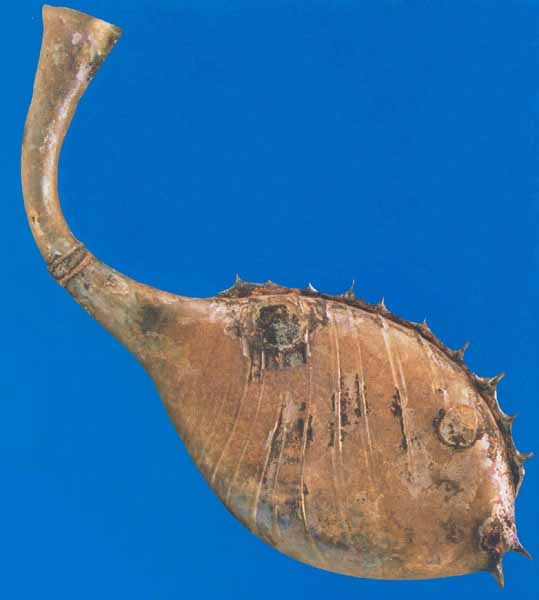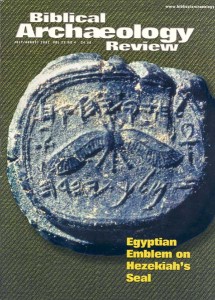
This blown-glass “fish” is an unguentarium, a flask for holding oils or perfumes that was used as a Roman grave offering. The 11-inch-long vessel comes from the town of Tafas, in southern Syria, and was made in about 200 A.D.

The art of glassblowing was first developed in Syria in the first century B.C. A piece of molten glass is placed on the end of a hollow tube and blown into, producing a bulb or vessel that can be shaped in various ways—either using paddles and pincers to flatten or pull it into the desired form or by blowing the glass into a mold. This unguentarium was made by blowing the glass into a fish-shaped mold; the body was then decorated with strands of molten glass applied to the surface.
Roman funerary customs provided an important market for the glassblower’s art. The afterlife was believed to be an idealized version of this world, and families had to provide their dead with grave furnishings such as food, wine and perfumes—the latter in bottles specially made for the purpose. Although wealthy Romans’ unguentaria were made of alabaster or silver, glass was a popular—and much more affordable—alternative for the wider population. Some Roman graves contain dozens of such vessels.
This flask is on display at the Fernbank Museum of Natural History in Atlanta until September 2, as part of the traveling exhibition, Ancient Empires, Syria: Land of Civilizations. For more information call 404–929-6300.
Already a library member? Log in here.
Institution user? Log in with your IP address.

